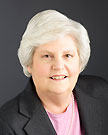AARP Hearing Center
The Federal Reserve Opens Its Doors
By Nancy A. LeaMond, October 16, 2019 04:05 PM
A few weeks ago, I had the opportunity to participate in a community listening session hosted by the Federal Reserve Board of Governors here in Washington, DC. This was one in a series of “Fed Listens” events around the country that bring together business and non-profit leaders, academics and other stakeholders to share their thoughts on how the Fed’s policies and practices impact different constituencies. At a time when economic anxiety is high and trust in many of our national institutions is shaky, I am especially appreciative when the organizations that help manage our money… or in this case the nation’s money supply... take steps to be more accessible and responsive to the people they serve.
A particular focus of this session was inflation and price stability . . . topics that are of deep concern to older Americans, including AARP’s 38 million members. As a general rule, Americans age 50 and up are VERY price sensitive. Rising costs affect their ability to pay for life’s necessities – housing, healthcare, food, and transportation – which in turn impacts how much, if anything, they have left over the spend or save.
However, as I shared at the listening session, older Americans are not a monolith. When we talk about issues related to economic security, it is useful to look at two distinct subgroups of AARP’s constituency.
- FIRST, there’s the 65 and older crowd. Not all of these folks are living on fixed incomes, but many are, which means they are (rightfully) focused on every dollar. Keep in mind that the average monthly Social Security benefit is about $1,400 per month. In 2017, about half of Social Security beneficiaries age 65 and up relied on the program for 50% or more of their family income, and one-quarter relied on Social Security for 90% or more. While Social Security benefits are adjusted for general inflation, this annual cost of living adjustment (a modest 1.6% this year) does not keep pace with healthcare costs which are going up significantly faster or take into account that older adults spend a greater share of their income on health care.
- SECOND, there are Americans age 50-64. Even though most of this group is still in the workforce, they tend to be even MORE anxious about rising costs. A survey AARP did last year found that 64% of Americans in this age group worry about prices rising faster than their income and nearly half (44%) say they worry VERY often. Remember that these folks aren’t eligible for Medicare, so being able to afford the health care they need is a big concern. Many are helping care for aging parents, raising families, putting kids through college or helping them pay off debt. Some are even stepping in to raise grandkids. Meanwhile, their income hasn’t increased much, if at all, over the last few years, and the economic turmoil of the great recession is fresh in their minds. They feel like they’re struggling to make ends meet TODAY and don’t know what they will do if prices go up.
Of course, there likely aren’t a lot of people who would say that they LIKE inflation. But, helping the Federal Reserve Board of Governors understand the nuances and how people experience things like rising prices is vitally important. In the macro-economics of monetary policy, inflation, interest rates and employment are inter-related (really, inversely related) levers . . . to make one go up, you push the other down and vice versa.
But, the view from people’s kitchen tables is much different. Folks want prices and the cost of borrowing money to stay low, the interest rate for their savings to stay high, and they want to be able to find a job when they need one.
Striking the right balance, therefore, isn’t an easy task. My thanks to the Federal Reserve for opening its doors and starting a discussion to help inform their thinking for the tough decisions ahead.

Nancy LeaMond is the chief advocacy and engagement officer for AARP, widely seen as one of the most powerful advocacy organizations. Leading its government affairs and legislative campaigns, she has the responsibility of driving the organization’s social mission on behalf of Americans 50-plus and their families. She also manages public education, volunteerism, multicultural outreach and engagement, and she directs major AARP initiatives that include supporting family caregivers through advocacy, education and innovative programs, and expanding AARP’s local footprint in communities across the country.































































